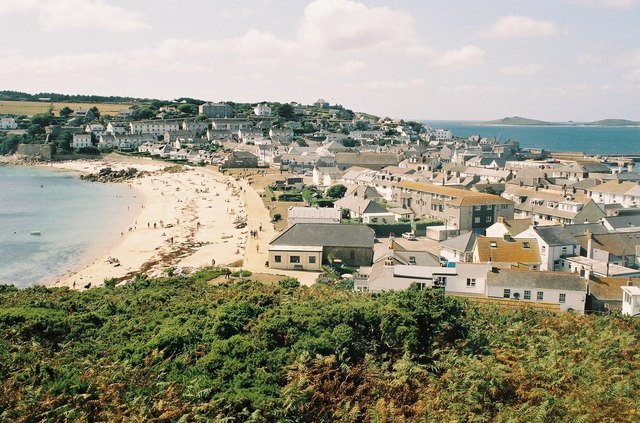When I was growing up in Penzance in the 1960s during Harold
Wilson’s time as Prime Minister you could guarantee that every summer, regular
as clockwork, the local news would feature the arrival of the PM at Penzance
station en route to his holiday retreat on the island of St Mary’s. On arriving at the station he would transfer
to the Scillonian for the choppy crossing to the Scillies, then he and his wife
Mary and their two sons would set up in their three-bedroom bungalow, Lowenva,
a Cornish word meaning “house of happiness”.
Wilson’s idyllic time on the island nearly came to a dramatic end in
1973, when he got into difficulties trying to get into a rubber dinghy. His submersion in the cold water brought him
close to death, but luckily a passing family from Rugby were able to fetch a
boat to rescue him with.
The sea crossing, now on the Scillonian III, is still going,
but the helicopter service that once supplemented it ended in 2012, prompting
fears among the Scillonians that economic decline would ensue. However, earlier this year it was reported
that a multi-million pound investment was being unveiled for a resumption of
the helicopter crossing. An alternative
air crossing is available from Land’s End Airport. St Mary’s is the largest island in the
Scillies, and the main town is Hugh Town, which occupies a narrow neck of land
to the south-west of the island, between Porthcressa Beach and Town Bay. This is where the Scillonian anchors, and inter-island boat trips set off from here. There are also round island coach tours
available from Hugh Town which are geared up for day trippers off the
Scillonian. At the southern edge of town is the Buzza Neolithic Tomb, which is worth walking up to if only for the view. The busiest time of the year is during May Day bank holiday
weekend, when the World Pilot Gig Championships are held. For a list of events on the islands, follow this link.
 | |
| Hugh Town - geograph.org.uk - 473796. Photo by Chris Downer, via Wikimedia Commons. |

